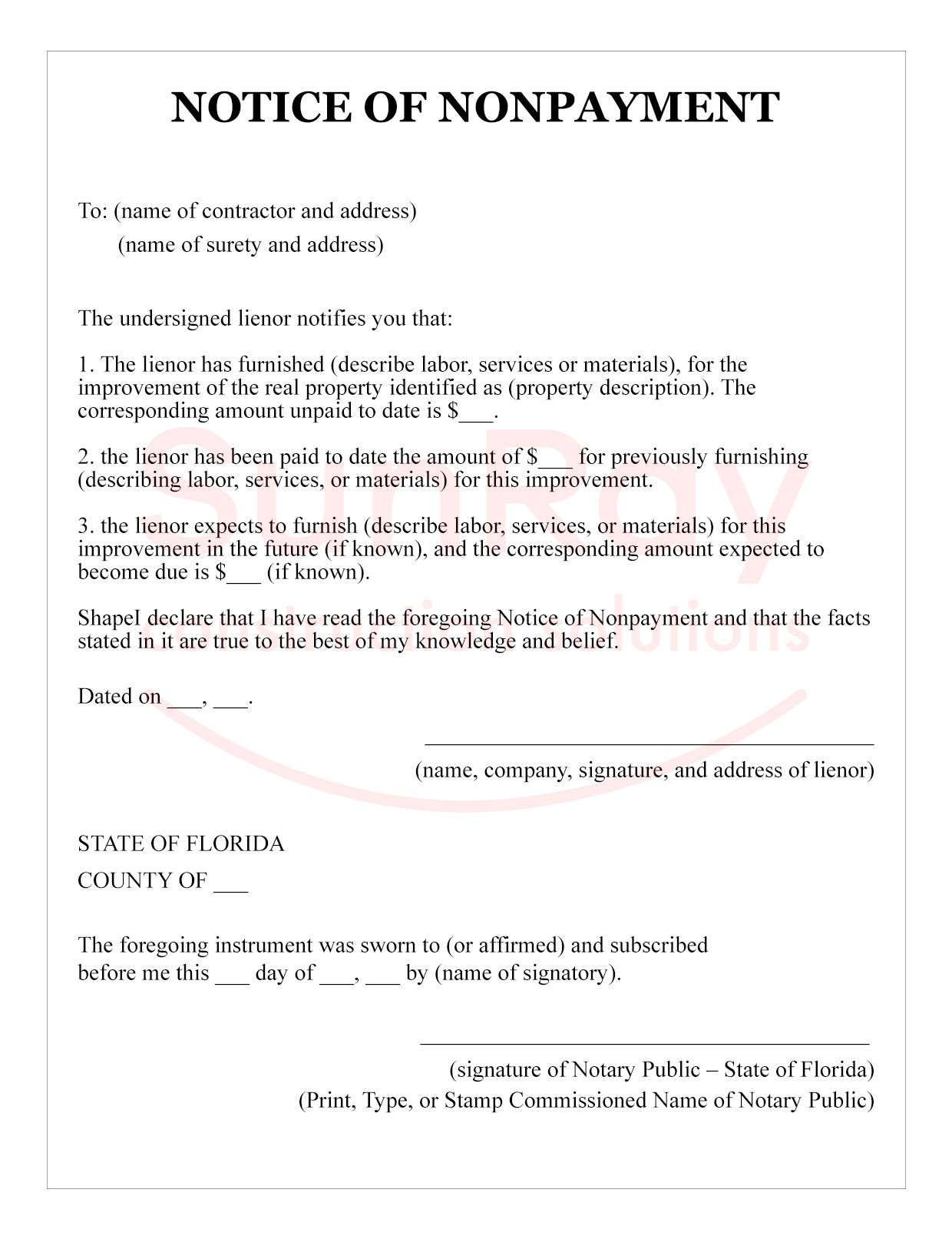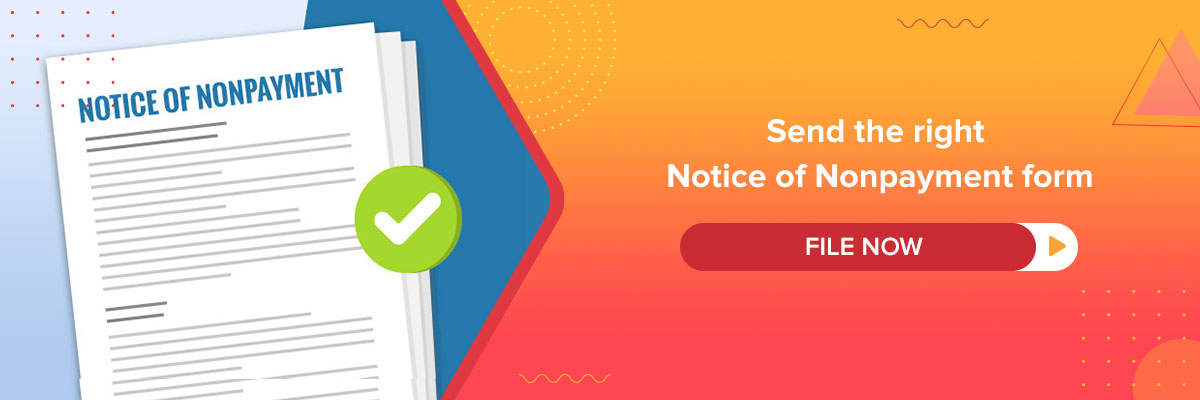These Are the Newest Changes to the Lien Law in 2019 - Webinar
Lien laws do not change very often, but when they do it is important to stay informed. Understand how the new Florida lien law affects you as a subcontractor, what to do after an owner makes a demand letter, and more.
Last updated:
Dec
17
,
2025
Published:
Oct 20, 2020
10 Mins
Read
The year 2019 saw a few very important changes to the lien law. This included changes to forms, new penalties, how to protect lien and bond claim rights, and how these changes affect different groups of people like suppliers and subcontractors.
This blog has been taken from a webinar presented by SunRay Construction Solutions and Alex Barthet. Alex is a board-certified construction lawyer who serves clients in the state of Florida. While it is not very often that the Florida lien law changes, when it does, typically those changes are significant. We are going to talk about the most significant changes that happened to the Florida lien laws so that you are ready when those changes take effect.
Closing Residential Building Permits
The first change is with respect to closing residential building permits.
Under 553.79(15)(a), when a property owner is trying to close a permit, the property owner may retain the original contractor listed on the permit or hire a different contractor.
The most important change in the law is that now, if the owner hires a new contractor which may be you, under the statute, you are not liable for any defects in the work performed by the original contractor. Previously, the problem was that new contractors were hesitant to do work under a new permit because they thought that they would potentially be liable for things that they did not do.
The statute was revised to make it very clear that that is not the cause. You are only responsible for that work you do, not for the work that was done by someone else.
Criminal Penalties for Residential Deposits
Now we will talk about criminal penalties for residential deposits on construction. This change in the law happened on July 1, 2019. It was amended to make it easier for homeowners to press criminal charges against contractors with respect to deposits.
1. It is important to know when it applies. When a consumer for residential construction makes a payment in excess of 10 percent of the contract price, you as the contractor have to apply for a permit within 30 days. And you need to begin work 90 days after that permit is issued.
Now if you do not, the homeowner can make a written demand, and this is what kicks off the process. So once that written demand is made by the owner to the prime contractor, the contractor has to do one of three things:
- apply for the permits
- start the work, or
- refund the payment
2. Now if you receive money in excess of the value of the work you perform, this is beyond just the 10 percent deposit. So, let us say that you have a contract for $100,000. You have been paid $60,000 but there is only $30,000 of work in place. In the example above, you have now been paid for more than the work that is in place. If you fail or refuse to perform any work within any 90-day period, or any period that is mutually agreed upon in the contract, if you receive a similar notice, you could be found guilty of either a felony or a misdemeanor depending on how much in excess you have received.
3. Absent just cause or if the contractor does not properly terminate the contract, then the owner can make a written demand for:
- the work be performed, or
- the money be returned
4. Another big change in the statute is courts can now infer that the contractor did not have just cause for not complying if the contractor fails to comply with the homeowner’s written demand within 30 days of receiving the notice, and the owner may press criminal charges.
In most instances you are presumed innocent until proven guilty. This is an example that upon receipt of that notice, to a great degree, you are assumed guilty unless you prove yourself innocent.
5. Anything over $1,000 is a felony, which as a licensed contractor, you will now have to report to the board. It becomes a stain on your license, and you may even lose your license.
6. One of the big defenses that existed before was that a contractor could argue that there was no intent to defraud. The problem now is that if more than 30 days pass after you receive the notice, it is going to be presumed that you had the intent to defraud the homeowner.
7. There is no defense that the contractor intended to return the money. So, what is absolutely critical is if you have a contract that spells out the payment schedule and timeline for work, and you follow that schedule, then you are okay even if the schedule exceeds the time limits in the statute.
Additionally, if you have a problem with an owner, you may want to terminate the contract as per the terms of your contract, before the owner can make a claim against you. Because once the contract is terminated, then it becomes a civil issue. It is much less likely to be a criminal issue.
Payment Bond Claim Process and Forms
Now we will get on to the payment bond claim process and the new form. Effective October 1, 2019, the Notice of Nonpayment must be served on the contractor and the surety. The prior form was a lot like a letter because it just said this is who you are, this is how much money you are owed, you sent it out via certified mail, signed it, and you were good to go.

This new form must be made under oath, which means you have to swear to have it notarized. The notice must also include, as of the date of the notice, the following information:
- the nature of the labor or services performed or to be performed;
- the materials furnished or to be furnished;
- the amount paid on the account to date;
- the amount owed; and
- if known, the amount to become due.
An example for the last point is, you have a $100,000 contract, you have not been paid, and you have a contractor’s payment bond. If you have been paid $60,000 and you are owed $40,000, you would say that the amount paid on the account is $60,000 and the amount owed is $40,000. If known, the amount to become due would be $40,000, because you had the $100,000 contract at the point in time when you submit the notice. That would be the math.
Now if you are a material supplier and you just supply materials as they are requested, then the amount to become due would be zero. Because until you get the next order, you do not know that you have an obligation to ship anything else.
In this form you also need to include the amount of retainage that you may be owed at the time. Now always remember the law has not changed in this regard – the failure of a lienor to receive retainage sums not in excess of 10 percent of the value of labor, services, or materials furnished by the lienor is not considered a nonpayment requiring the service of the notice.
This means that if you are owed, let us say 10 percent retainage and that is all you are owed, the time period to serve your notice does not even start to run. So, if you have been paid down and it is 5 percent retainage left to be paid, you do not technically need to serve that Notice of Nonpayment. That again, is 90 days from your last work on the job. Now if you are owed 10 percent retainage and a dollar of contract work, you need to serve the notice for the full amount.
There is no harm in serving a Notice of Nonpayment even if all you are owed is retainage. If you have any doubt, always serve the notice.
Now, here is the form that currently exists in the statute:

Protect Your Rights with a Notice to Owner
Sending a notice to owner is the first step to secure payment on construction projects. Learn how a notice to owner Florida helps protect your lien rights and ensures you get paid.
Protect Your Payment Rights with Florida’s Most Trusted Notice & Lien Services
Notice to Owner – Secure your lien rights early. File your NTO now!
Notice to Owner Florida – Stay compliant with Florida deadlines. Send your NTO today!
Mechanics Lien Florida – Get paid faster. Start your Florida lien process now!
As you can see, it is addressed to the contractor and surety. You will list both of their addresses and there are blanks for sections that you will need to fill in. You also need to describe the materials and labor that you have provided, the amount that is unpaid, and the amount of unpaid retainage. You list the amount that you have been paid to date. Then you have to swear under oath that all of this information is true as of the time of the notice.

Penalties for Improper Bond Claims
So, let us now talk about some of the penalties and why this statute changed. To give you a little bit of history, the primary drivers for the change in this statute, were the contractor lobby and surety lobby. They have been pushing hard because they wanted to force subcontractors and suppliers to provide more information when a claim is submitted.
The old form as mentioned above, was a letter that was not notarized, and it just listed how much you were owed. It provided no other information. So what are the penalties now, for an improper bond claim? As you may know, if you record a lien and that lien is found to be fraudulent, then there are penalties.
1. So now because the document is notarized, if you submit a Notice of Nonpayment that is determined to be fraudulent, you will lose all your rights under the payment bond.
2. It is a complete defense for the contractor and the surety to not pay you and to defend against your notice if it is determined that the claim is fraudulent. So what is a fraudulent notice? It is one in which the claimant willfully exaggerated the amount due, willfully included a claim for work not performed or materials not furnished or prepared the notice with willful and gross negligence, which resulted in willful exaggeration.
Here is an example of a situation in which this could be problematic: Let us say that you are a rental company and you rent out shoring and forming equipment. When it comes back, you realize that you have not been paid all your money and that of the $50,000 you are owed, $5,000 is for lost or damaged material. That $5,000 is not lien able and it is not a proper claim against the bond.
So if you include in your Notice of Nonpayment against the payment bond surety that claim for $5,000 of lost or lost materials, it could be determined by a court that the inclusion of those amounts now makes the entire notice unenforceable and fraudulent. So, you need to be extra careful just like you are with your liens to make sure that the math is correct and that you are only making claims for what is truly claimable.
3. That being said, a minor mistake or a good-faith dispute as to the amount due, is not considered “fraudulent.” What they have done in the statute is, they have copied much of the fraudulent lien statute language in cases over to the bond claim.
4. Now this section matches the fraudulent lien statute. So now the issues on a fraudulent lien are the same ones that you deal with on a bond claim. So just like if there is a good faith mistake, the negligence or omission of any information in the notice that has not prejudiced the contractor, the surety, does not defeat an otherwise valid payment bond claim.
5. It is extra important to make sure that you verify the information you are providing because you do not want to have this fight if you can avoid it. So if you can make sure that your information is right, you will minimize the fight associated with whether or not your notice is a fraudulent one.
6. Aside from being “fraudulent,” notices that do not contain the required information, are not notarized, or do not track the statutory form “substantially” are likely ineffective. This is for those contractors or even subcontractors that may get claims against their bond.
7. So as of October 1, 2019, the form that needs to be submitted to make a claim on a payment bond is the one mentioned above. If you use the old form instead, and the claimant does not correct that mistake, the penalty is not necessarily that the claim is fraudulent, it is that they have not complied with the law, and much more likely than not, that claim is going to be invalid.
8. So for contractors or sureties who get improper claims, I would suggest that you don’t do anything. And when the time period runs out for them to submit a proper notice form and they don’t, you can push back and say that you don’t have to pay because they didn’t use the statutory form or provide the information that is required by the law.
9. The last significant change is for bonds issued on or after October 1, 2019, contractors are now entitled to recovery of attorney’s fees under FS 627.428 when obtaining a judgement against a surety for failing to make a payment under a payment or performance bond.
The old statute was a one-way fee provision statute. Meaning that if you are a subcontractor and you make a claim against a surety but let us say you do not win. You may not recover the money, but you have spent legal fees. You will have to pay those. But you do not have to pay the other side’s legal fees for beating them. Because the old statute was a one-way fee, meaning that if the insurance company wins, they get nothing. But if they lose, they would have to pay you your fees. This is the reverse of that previous statute.
So if you are a subcontractor, you make a claim against the contractor’s payment bond, and you win, you recover my fees. But if you lose, you are now subject to having to pay the contractor his or her legal fees to defend against a payment bond claim that you lost, and they won.
SunRay Online System Has the New Statutory Form!
The SunRay customers who are already familiar with the system, do not need to worry about the new statutory form.
These are some of the benefits of using this system:
- Easily send your notices online through the SunRay system.
- Do not lose your lien and bond claim rights. Our system will send you reminders and you can set reminders yourself, which will alert you on Outlook or Gmail.
- You can request lien rights in just 60 seconds, by requesting your Preliminary Notice. The information you need to fill out is very straightforward and includes who you have a contract with, where you are working, and other basic information.
- Our system always has the statutorily required forms.
- You can easily setup reminders for your projects.
- All of your waivers can be requested and managed online for free.

Sunray Construction Solutions offers professional "Notice to Owner Florida" services to help you secure your mechanics lien florida rights in the construction industry. Looking for a free Notice to Owner form in Florida? Get your free, editable "Florida Notice to Owner Template" today for easy and accurate preparation.



.jpg)








